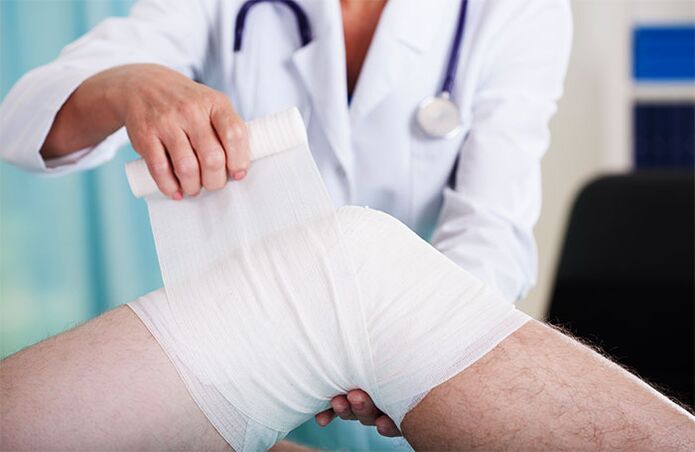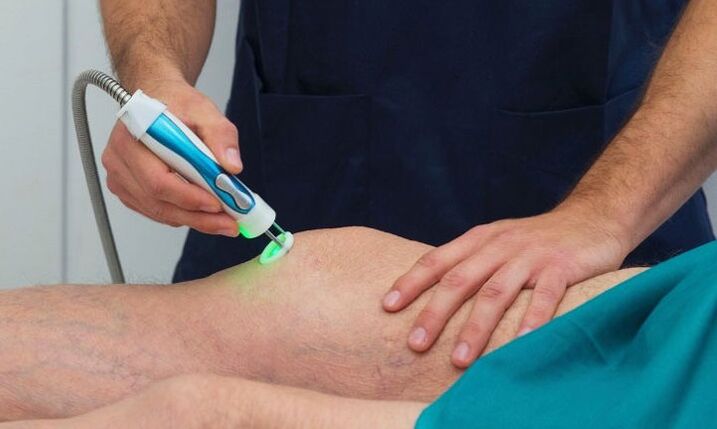
If a crunch is heard in the knee joint during movement, it is the first sign of gonarthrosis. Conservative methods of traditional and alternative medicine will help prevent the destruction of cartilage and maintain normal motor function. Treatment should be started immediately - only in this case rheumatologists give a favorable prognosis.
What is gonarthrosis?
A non-inflammatory, degenerative-dystrophic disease that affects the largest joint, the knee, is called gonarthrosis. Quite an unusual medical definition, there is a simpler "folk" concept - "salt deposition". Although the clinical picture of gonarthrosis of the joints has little to do with the excess of calcified salts in the knee joint. They have no effect on pathology and are a side effect of impaired metabolism.
Negative processes in hyaline cartilage contribute to the development of gonarthrosis of the knee joint, primarily poor blood circulation in small bone vessels. Lack of nutrients and oxygen carried by the lymph flow leads to the destruction of the outer cartilaginous layer of the knee.
In the early stages, the disease is extremely difficult to recognize. Deformation of the joint occurs slowly, until the hyaline cartilage of the vitreous is drawn into the process. The anatomical structure of the ligament has been modified. Blurring occurs, the tissue thickens, becomes thin, bursts in all directions. The pathology can result in the complete disappearance of cartilage, leading to neoplasms on the bone tissue and irreversible curvature of the knee.
Classification of diseases
The International Classification of Diseases divides gonarthrosis into seven clarified subheadings:
- Primary bilateral gonarthrosis. The diagnosis is most often made in women aged 70 to 74 and men aged 60 to 64. This puts the disease in the category of "elderly".
- Another primary gonarthrosis. Pathology of one knee joint, due to natural wear or in the background of other diseases.
- Bilateral posttraumatic gonarthrosis. People of different ages with severe leg injuries were affected.
- Other posttraumatic gonarthrosis. One-sided, on the background of injuries and bruises of the extremities.
- Other secondary gonarthrosis is bilateral. They are the result of chronic, incompletely healed bruises, fractures, or dislocations. It is most often diagnosed in athletes who have heavy loads on both legs - football players, athletes, figure skaters.
- Other secondary gonarthrosis. Unilateral development of pathology related to the profession. For example, miners, metallurgists, fishermen.
- Gonarthrosis, unspecified. Unexplained etiologies of the disease are diagnosed, after age, occupational and genetic predisposition are excluded.
According to medical statistics, more than 10 million people of different ages suffer from gonarthrosis of this or that type. Every year, about 3, 000 people die with an established diagnosis.
Causes
Osteoarthritis of the knee joint occurs due to impaired metabolism in the knee joint, which leads to loss of softness and elasticity of cartilage.
Destructive processes are caused by various reasons:
- Diseases of the thyroid gland, which disrupt the hormonal background;
- Decreased patency of blood vessels in the knee joint;
- genetic conditioning;
- natural aging;
- Previous or current knee injuries, of various origins;
- Obesity (more than 20% of the norm), which creates great pressure on the knee joint;
- Inflammatory diseases of the joints (polyarthritis, purulent arthrosis);
- Autoimmune diseases (rheumatoid arthritis);
- Specific infectious pathologies (syphilis, tuberculosis, encephalitis);
- Life in environmentally unfavorable areas, poor quality of food and water.
Also, rheumatologists identify several additional reasons that lead to the development of gonarthrosis. Dysplasia in newborns. With this diagnosis, the joint wears out faster. Changes in the structure of collagen lead to a violation of the protein found in connective tissue.
Symptoms depending on the degree of gonarthrosis
It is difficult to diagnose the initial stage of knee osteoarthritis. Only the description of the symptoms by the patients themselves and the external examinations of the rheumatologist make it possible to create a clinical picture that differs for each degree of gonarthrosis progression:
- And the degree of gonarthrosis.Traction pain in the knee, a feeling of some stiffness, partial loss of sensation, difficulty bending the leg, especially after prolonged immobility, inability to walk or run for a long time, the appearance of mild swelling. As a rule, the symptoms disappear after rest or simple anesthetics.
- grade II gonarthrosis.At this stage, it is already possible to determine the pathology by X-ray examination. The pain becomes stronger and occurs after each physical activity. Discomfort can still be alleviated by rest. In the morning it becomes harder to straighten the legs, it takes some time for motor function to return. The discomfort is supplemented by frequent cramps in the leaves, especially at night. A creak is heard during the movement. Swelling of the knee joint is pronounced. There are visible signs of limb deformity.
- III degree of gonarthrosis.There are irreversible changes in the knee joint. Cartilage abnormalities can be unmistakably detected on X-ray. Knee pain becomes constant, acute. The leg stops bending at the knee. The patient cannot walk without a cane or crutch. The island is significant. The anatomical shape of the knee is smoothed and takes on a firm appearance. There is a primary curvature of the spine.

Diagnosis
A combination of clinical manifestations of osteoarthritis of the knee and patient complaints is used to make the correct diagnosis. In order to clarify or exclude the causes of the disease, studies are conducted in different ways.
The standard diagnostics goes like this:
- Making a medical history. History of concomitant diseases, genetic predisposition, early trauma and surgical interventions, professional activities, etc.
- External assessment of deformation of the musculoskeletal system. Gait, posture, condition of the knee joint, curvature of the legs.
- General overview. Palpation of the lower leg, thigh, damaged joint, determining the location of the disease.
- Laboratory tests. A general blood test gives information about the absence of an inflammatory process. If the process is present in the background of other diseases, then an increased erythrocyte sedimentation rate will be found in the blood. The level of protein, globulin and fibrinogen will differ from the normative indicators. The biochemical composition will remain within standard limits. If the progression of the pathology is in the final stage, then a biopsy of the synovial fluid of the knee joint is performed.
- Instrumental research. X-ray is the main and most common method of diagnosing suspected gonarthrosis. As a rule, a rheumatologist can easily determine changes in the structure of bone tissue from the picture at the beginning of the 2nd stage of the disease. The presence of secondary diseases and the causes of their occurrence are diagnosed with the help of modern and more precise equipment - MRI, CT, ultrasound, osteostincigraphy, thermography.

Treatment of gonarthrosis
Like all joint diseases, gonarthrosis requires systemic treatment, which should be started as soon as the first symptoms appear. In this case, the prognosis of therapy becomes favorable and guarantees a return to normal life in a relatively short time.
Comprehensive treatment is aimed at eliminating the main signs of the disease:
- Discomfort, pain syndrome and muscle tone;
- Improving the motor function of the knee joint;
- Stopping the process of cartilage destruction;
- Strengthening connective muscles;
- Restoration of normal blood circulation in the knee joint.
Medications
Anti-inflammatory drugs
They help cope with pain, relieve swelling caused by inflammation of muscle tissue.
Chondroprotectors
Regeneration and renewal of cartilage tissue is impossible without chondroprotectors. They are a major component of conservative treatment.
Vasodilators
They are used to improve the patency of intra-articular blood vessels.
Hormonal drugs
Reduce the production of the hormone cortisone, to prevent the development of inflammatory processes.
Hyaluronic acid injections
It is used to restore intra-articular synovial fluid. This reduces friction between the joint parts, normalizes motor function and restores the elasticity of cartilage tissue.
Antienzyme agents
They inhibit trypsin activity, thus preventing further destruction of the joint. Named in the complex.
Physiotherapy
Physiological treatments have been used successfully for decades to treat osteoarthritis of the knee. It can be a special type of therapy, for prevention or in the period of rehabilitation. As well as an integrated approach to disease.
Most often, a rheumatologist prescribes the following types of procedures:
- Electrophoresis with painkillers;
- Ultrasound treatment;
- Magnetotherapy;
- Laser exposure;
- Paraffin applications;
- Mud treatment;
- Therapeutic exercises (exercise therapy);
- Manual therapy, massage with healing ointments.
Surgery and prosthetics
If gonarthrosis is in an advanced stage, the knee joint and cartilage tissue are destroyed, it is impossible without surgery. Otherwise, the person will remain disabled for life.
Modern medicine offers several ways to solve the problem:
- Arthrodesis. Complete removal of affected tissues and knee joints. The body is freed from the focus of the disease, but the motor function of the extremities is completely lost. It is used extremely rarely if the patient has additional joint diseases.
- Arthroscopy. Destroyed hyaline cartilage is removed. The operation is low-traumatic, it has a short period of rehabilitation. It is indicated for patients whose progress has not affected the knee joint itself.
- Periarticular osteomy. A complex operation, the essence of which is the filing of deformed bones and growths, with subsequent connection into the necessary anatomical structure.
- Endoprosthetics. The completely destroyed knee joint is removed and a titanium prosthesis is placed in its place. An effective method that allows you to forget about gonarthrosis forever. It requires careful preparation and long rehabilitation.
Traditional medicine
The use of folk recipes in combination with conservative treatment can alleviate external symptoms (pain, swelling). Recipes based on bay leaf, burdock root, St. John's wort, malt and hay have worked well. They are used to make ointments, creams, tinctures and decoctions.
These herbs have anti-inflammatory and analgesic properties. Requires regular and long-term use to achieve visible results.
Ointments and coatings based on honey, with the addition of alcohol or apple cider vinegar, alleviate swelling and have a calming effect on the affected tissues.
Lemon and garlic are used to make a nutritious mixture that is taken orally, one teaspoon at a time, after breakfast and dinner. Such a recipe has a general strengthening of the organism, increases the patency of blood vessels and nourishes the joints with useful trace elements.
It should be borne in mind that home treatments do not eliminate the main problem - pathological destruction of the knee joint.

Diet
Dietary compliance is an integral part of complex treatment. Adjusting your diet will not only help control weight, but will provide bones and joints with essential vitamins.
For a patient diagnosed with gonarthrosis, the following are contraindicated:
- Fried, spicy, salty, sour foods;
- Fatty soups;
- Sweet pastries;
- Fruit, with a high content of acidic enzymes;
- Alcoholic beverages.
The menu should be filled with raw vegetables, fruits and herbs, low-fat sour milk products, bone soups and dishes that contain gelatin (jelly, jelly).
Additional methods
For the treatment of gonarthrosis, regular spa treatment is needed, at least once a year, if possible more often. Procedures of hydrotherapy, mud therapy and manual therapy are able to preserve the disease for a long time and prevent joint destruction.
You will need the rest of your life to keep your sore knee in a stable condition. But it can become very beneficial for the body as a whole. Reviewing your diet, eliminating bad habits, playing sports, visiting resorts - the quality of life can be significantly improved.
It should be borne in mind that self-medication, ignoring the primary symptoms and unbearable stress on an inflamed knee joint can very quickly turn a healthy person into a helpless disabled person.






























